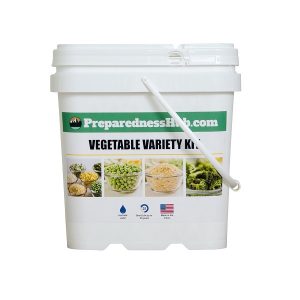
“The Dip” is a book by Seth Godin that touts itself as “A little book that teaches you when to quit (and when to stick).” So what exactly does this mean, and what does it have to do with prepping? Well, the main idea of the book is that every new project or major change starts out fun and interesting, but as time goes on, these once fun activities can become difficult, boring, and downright irritating. This is why so many of us have half-finished projects at home, half-read books, and emails that we know we’ll get back to.
The trick, as taught by the book is to know if you’re in a dip, which is a temporary setback, or if you’re just heading down hill with no end in sight. If you’re in a dip then you have to work twice as hard to get out of it and get back on track while if you’re in a free-fall you should cut your losses and move on. While this idea is applied to business in the book, it applies to the art of survival and prepping very nicely, too.
What happens when you reach a point of prepping that you don’t feel you’re adding any more value even though you’re dumping money into your prep? Well, you can keep going and purchasing items and learning skills, or you can decide you’re heading down a dead-end path and drop it for something different. By “dropping it” we mean choosing a different scenario to follow and prep for that may fit your lifestyle better and offer a wider range of fallback.

Looking at an actual survival scenario, this idea applies, too. If you’ve decided to bug-in and hold your ground you need to decide if it’s worth it to continue staying where you are or to move on. If you’re traveling farther and farther out to get supplies you need to seriously look at your situation and see if you’re just working harder to overcome a dip, or if things will continue to get worse. If the second is the case, then it’s probably best to cut your losses and move on to someplace better.
This idea may seem like throwing in the towel and quitting without much thought, but it’s actually a way to save and protect resources whenever possible. It’s no use wearing out your tools and exhausting your ammo supply defending yourself at a given location if there’s no sign of things getting better. In a case like this, you’re slowing going downhill without any idea how to come up the other side, which may not even exist.
The Dip
The idea of The Dip is to analyze situations and see when it’s truly just a dip that needs overcome, or if it’s not, and you’re just wasting your time. There’s a saying that goes “winners quit fast, quit often, and quit without guilt.” Remember, quitting isn’t always a bad word. You need to quit sometimes to regroup and become stronger.

The Dip is all about asking the right questions and being honest about your answers. In a prepper or survival scenario you need to know that the work you’re doing and the risks you’re taking are for a good reason, and won’t be wasted.
This idea most aptly applies to the following of particular survival scenarios and the specialized equipment and supplies that are needed. If you’re prepping for a supervolcano eruption you may not be seeing a lot of return on your investment. This means you need to look at your current plan and see if it’s worth continuing or if it’s better to move on to the next idea.
Using the idea of The Dip can help you understand when sticking to your guns (figuratively and literally) is a good idea, or if cutting and running is better. The ability to decide if you are indeed in a dip or just declining without a stopping point in sight is vital to long-term survival. In short, you need to know when to stay and when to go, and the idea of The Dip can help you make that decision.
While Godin’s book doesn’t directly apply to survival and prepping, the ideas are still useful when applied in this mindset. You can pick the book up from Amazon here.

 Freeze-dried Vegetable Variety Kit
Freeze-dried Vegetable Variety Kit